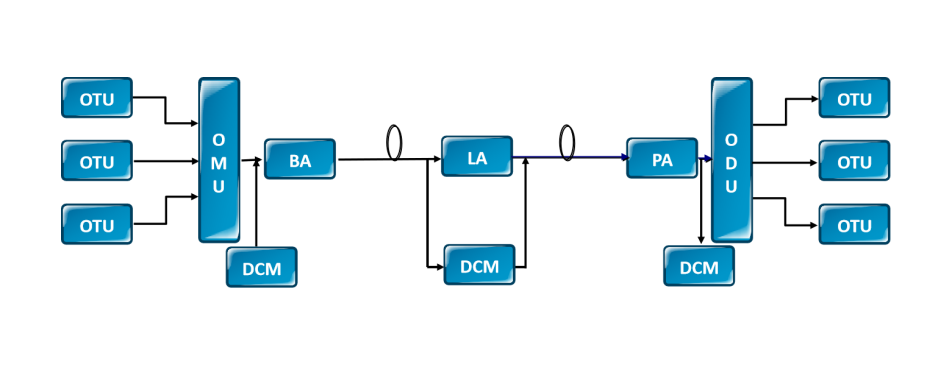Dense Wavelength Division Multiplexing (DWDM) is the ability to multiplex optical signals of different wavelengths into the same optical fiber for transmission. This is a technology used to increase bandwidth on existing fiber optic backbone networks.
DWDM optical transmission system usually has the following optical devices:
wavelength conversion unit (OTU),
Wavelength division multiplexer (OMU/ODU, also called Mux/demux),
Optical amplifier (BA/LA/PA),
Dispersion compensation unit (DCM)

The customer-side optical module passes through the OTU, and the wavelength is converted into DWDM light near 1550nm, and then enters the
DWDM wavelength division multiplexer, where multiple lights of different wavelengths are combined on one optical fiber for transmission. , the optical power will drop, and it is necessary to increase the amplifier (BA/LA/PA) to make up the optical power. In the process of transmission, light is not always transmitted in a straight line. The farther the transmission distance is, the greater the divergence of light is, which requires a dispersion compensator (DCM) to pull it back. After being transmitted to the end point, all the wavelengths are decomposed by the demultiplexer, connected to the OTU, and the DWDM wavelength is converted into the wavelength of the client-side module. This completes the signal transmission.

